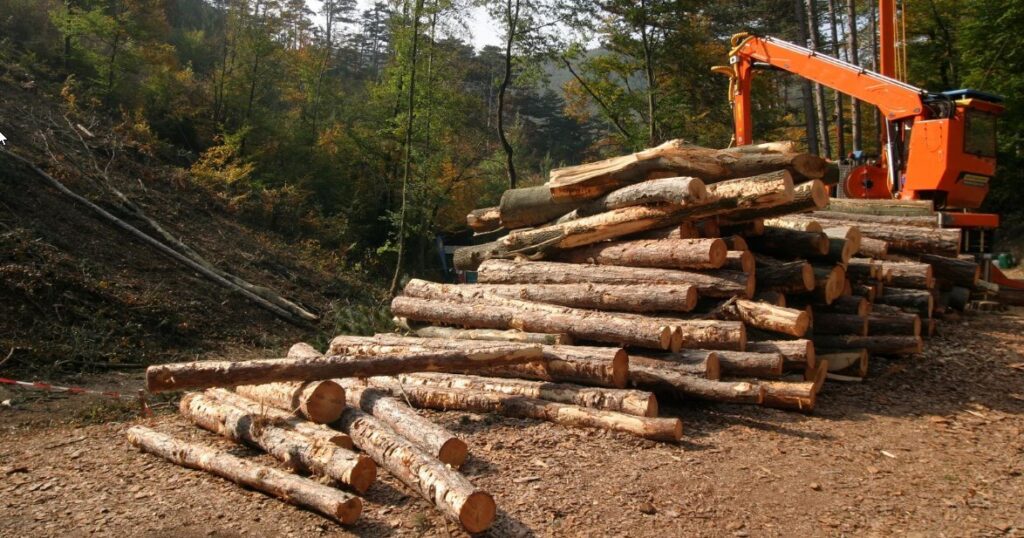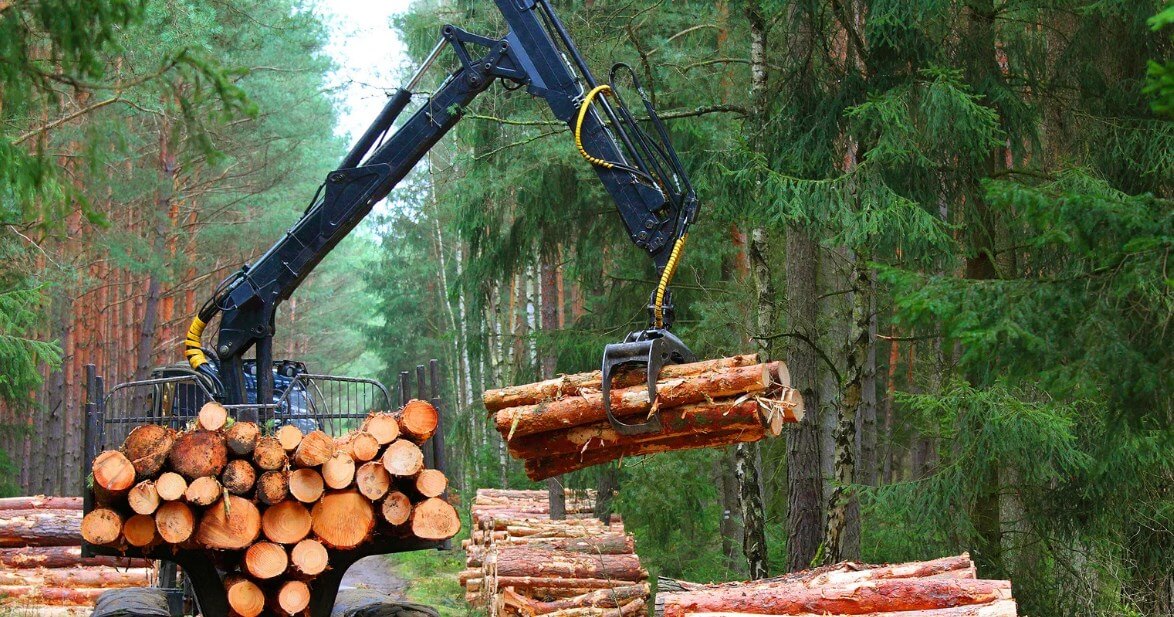Canada’s vast and diverse forests have long been the backbone of the nation’s economy, culture, and environmental heritage. In the ever-evolving world of forestry, technological advancements have significantly transformed how timber is harvested, making operations more efficient, safe, and sustainable. Among the many machines that have reshaped logging practices, the harvester machine stands out as one of the most innovative and indispensable tools in modern forestry.
In this deep dive, we’ll explore the harvester machine in detail—from its evolution and core components to its benefits, safety features, and future trends. Tailored for a Canadian audience, this article will provide insights into how harvesters are revolutionizing the logging industry in Canada, ensuring that our forests are managed responsibly for generations to come.
What Is a Harvester Machine?
At its core, a harvester machine is a specialized piece of forestry equipment designed to streamline the process of harvesting timber. Unlike traditional logging methods that rely heavily on manual chainsaw operations, a harvester can perform multiple tasks in a single cycle. These machines cut, delimb, and buck trees all in one operation, significantly reducing the need for additional equipment and labour.
Key Functions:
- Cutting: The harvester uses a high-powered saw head to cut trees at the desired height, ensuring that the tree is felled cleanly.
- Delimbing: Once the tree is cut, the machine automatically removes branches and limbs, preparing the trunk for processing.
- Bucking: Finally, the machine cuts the trunk into logs of specific lengths, ready for transport to mills or processing facilities.
This integrated approach not only boosts productivity but also minimizes waste and environmental impact—a critical factor in Canadian forestry, where sustainable practices are paramount.
The Evolution of the Harvester Machine

The journey of the harvester machine is one of continuous innovation. Early logging operations in Canada were dominated by manual labour—chainsaws, axes, and hand tools were the primary means of felling trees. However, as the demand for timber increased and the need for improved safety and efficiency became apparent, the forestry industry turned to mechanization.
From Manual Labor to Mechanized Precision
Early Mechanization:
In the mid-20th century, the introduction of mechanized logging equipment began to change the landscape. Machines like the feller buncher emerged, which could cut and gather trees, but they could not process the wood further. As technology advanced, the industry saw the development of integrated machines that could handle multiple tasks, leading to the creation of the modern harvester.
Technological Breakthroughs:
Advancements in hydraulic systems, computer control, and durable materials enabled manufacturers to design harvesters that could operate in the challenging conditions of Canadian forests. Today’s harvesters are not only powerful and precise but also equipped with features that enhance operator safety and environmental sustainability.
Canadian Innovation:
Canadian forestry companies and research institutions have played a significant role in refining harvester technology. By focusing on the unique conditions of Canada’s diverse ecosystems—from the boreal forests of the North to the mixedwood stands of the Rockies—these innovations ensure that harvesters meet the rigorous demands of Canadian logging.
Feller Buncher vs. Harvester Machine: Understanding the Key Differences
While both feller bunchers and harvesters are integral to modern logging, they serve distinct functions that complement each other within a well-organized timber harvesting operation. Understanding these differences is essential for selecting the right equipment for specific forest conditions and management objectives.
Feller Bunchers: Precision Cutting and Bunching
A feller buncher is designed primarily to fall trees and gather them into neat clusters (or bunches). Here are the key features:
- Primary Functions:
Feller bunchers focus on cutting trees at the base and then “bunching” them together for efficient extraction. They streamline the initial stage of logging by replacing manual chainsaw work with a single, mechanized operation. - Mechanism:
Using a hydraulic boom equipped with a saw head, the feller buncher cuts the tree and holds it for precise placement. This method minimizes collateral damage to surrounding vegetation and allows for controlled felling angles. - Applications:
Ideal for clear-cutting or selective harvesting in dense stands where speed and operator safety are paramount. They’re particularly effective in scenarios where reducing manual labour is a priority.
Harvester Machine: Integrated Processing in One Machine
In contrast, a harvester is a more complex machine that goes beyond felling trees. Its main roles include cutting, delimbing, and bucking the tree into logs in one continuous process.
- Primary Functions:
Harvesters not only fell trees but also automatically removed branches (delimbing) and cut the trunk into specified lengths (bucking). This integrated approach significantly reduces the number of machines and steps required on the ground. - Mechanism:
Equipped with multifunctional saw heads and conveyor systems, harvesters streamline operations by performing multiple tasks with a single machine. Advanced electronic controls and sensors help ensure precise cuts, reducing waste and maintaining high-quality timber. - Applications:
Best suited for operations that demand a high level of processing on-site, particularly in areas where the forest is managed for high-value timber products. They are also well-adapted for selective harvesting, where precision is key to maintaining forest health and sustainability.
Key Differences and Complementary Roles
- Task Integration:
The main difference lies in task integration—while feller bunchers focus solely on felling and bunching, harvesters combine felling with delimbing and bucking, offering an all-in-one solution for timber processing. - Operational Efficiency:
Harvesters tend to be more versatile and efficient for complete processing in a single pass. However, feller bunchers are often faster at felling large numbers of trees, which can be beneficial in clear-cutting scenarios. - Cost and Investment:
Due to their multifunctionality and advanced technology, harvesters typically come at a higher initial cost than feller bunchers. Operators might choose a feller buncher for simpler operations or when budget constraints dictate a focus on basic felling functions.
Both machines are essential to modern forestry, and the choice between them—or the decision to use both in tandem—depends on the specific requirements of a logging project. At SAN Forestry, our expertise in operating both feller bunchers and harvesters ensures that we can optimize our timber harvesting practices while balancing efficiency, safety, and environmental sustainability.
How Harvester Machines Work: A Closer Look

Understanding the inner workings of a harvester machine is key to appreciating its impact on modern logging. These machines are marvels of engineering, integrating several functions into one compact unit.
Core Components
- Cutting Head:
- The cutting head is the most critical component of the harvester. It is powered by hydraulic systems that drive a high-speed saw, which can be a disc saw, bar saw, or even a shear-type cutter. This saw is responsible for making precise cuts at the base of the tree, ensuring a clean feeling.
- Delimbing Mechanism:
- Once the tree is felled, the delimbing unit removes branches automatically. This mechanism consists of rotating blades and conveyors that strip the limbs from the trunk efficiently. The result is a clean, streamlined log ready for further processing.
- Bucking System:
- After delimbing, the bucking system steps in to cut the trunk into predetermined lengths. This system is programmable, allowing operators to set specific log sizes based on the intended market or processing requirements.
- Operator Cabin:
- Modern harvesters feature ergonomically designed cabins that shield operators from the elements. These cabs are equipped with advanced controls, climate control systems, and even GPS and telematics for real-time monitoring.
- Hydraulic and Electronic Systems:
- The entire operation of a harvester is coordinated by sophisticated hydraulic and electronic systems. These systems ensure that each function—cutting, delimbing, and bucking—operates in harmony, optimizing the overall performance of the machine.
Key Benefits of Using A Harvester Machine in Canadian Forestry
Modern harvesters offer numerous advantages over traditional logging methods, making them a vital component in sustainable forest management.
Increased Efficiency and Productivity
- Speed of Operation:
A single harvester can process multiple trees per hour, drastically reducing the time needed for logging operations. This efficiency means that large-scale projects can be completed in a fraction of the time compared to manual methods. - Labor Savings:
By integrating cutting, delimbing, and bucking into one machine, harvesters reduce the need for additional labour. This not only cuts operational costs but also minimizes the risk of human error and injury.
Enhanced Safety
- Operator Protection:
The enclosed, climate-controlled cabins shield operators from harsh weather, falling debris, and other hazards typically encountered in manual logging. - Automated Processes:
Automation reduces the need for manual chainsaw work, lowering the risk of accidents and ensuring that each operation is carried out with precision.
Environmental Benefits
- Selective Harvesting:
Harvesters enable precise, selective cutting of trees, which minimizes damage to surrounding vegetation and maintains forest biodiversity. - Reduced Waste:
By accurately processing each tree, harvesters minimize wood waste. The clean cuts and consistent log lengths enhance the overall value of the timber and reduce the need for additional processing.
Economic Impact
- Cost Savings:
With faster processing times and reduced labour requirements, harvesters contribute to lower overall operational costs. - Market Competitiveness:
The precision and efficiency of modern harvesters ensure that the timber produced is of high quality, meeting the stringent requirements of both domestic and international markets.
The Role of A Harvester Machine in Canadian Forestry
In Canada, where forests cover millions of hectares and logging is both an economic cornerstone and a cultural legacy, harvester machines play a critical role in ensuring that timber harvesting is efficient, sustainable, and safe. The harsh Canadian climate, varying from the cold boreal winters to the brief but intense growing seasons, demands equipment that can perform under extreme conditions. Harvester machines have evolved to meet these challenges, incorporating cutting-edge technology and robust design features that make them indispensable to the industry.
For landowners and forestry professionals, the advantages of using harvesters are clear:
- Increased Efficiency: Harvesters reduce the time and labour required for logging, leading to faster project completion.
- Safety: By automating the most dangerous tasks, these machines help protect workers from the risks associated with manual cutting.
- Sustainability: Precision harvesting minimizes environmental damage, supports natural regeneration, and aligns with sustainable forestry practices that are critical in today’s changing climate.
- Economic Benefits: The improved productivity and quality of timber yield translate into better market competitiveness and profitability.
As Canada continues to address the challenges of climate change and environmental stewardship, the logging industry is poised to benefit from ongoing innovations in harvester technology. Whether it’s through the integration of automation, the adoption of eco-friendly machinery, or the continuous refinement of safety protocols, harvesters are a key component in shaping the future of sustainable forestry in Canada.
Conclusion
Harvester machines have revolutionized the logging industry in Canada by combining multiple functions into one efficient, safe, and environmentally responsible unit. From cutting and delimbing to bucking trees into standardized logs, these machines have significantly reduced the need for manual labour and enhanced the precision of timber harvesting. As the industry continues to evolve with advancements in automation, data analytics, and eco-friendly technologies, the role of the harvester will only grow more prominent in sustainable forest management.
We encourage you to explore SAN Forestry for professional services or seek expert consultation tailored to your forestry needs. Take the first step toward responsible forest management by connecting with us today. Visit our contact page for more information and to get in touch with our team of professionals.
SAN Forestry offers competitive salaries and benefits and ample opportunities for professional growth and development within the organization! We take pride in providing our employees with a safe work environment where they can thrive professionally while having fun! If you think you have what it takes to join our team of Class 1 Drivers and Heavy Equipment Operators, then don’t wait — Apply Today!




